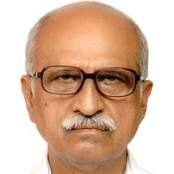International Journal of Computer Network and Information Security (IJCNIS)
IJCNIS Vol. 10, No. 10, 8 Oct. 2018
Cover page and Table of Contents: PDF (size: 1005KB)
MANETs: QoS and Investigations on Optimized Link State Routing Protocol
Full Text (PDF, 1005KB), PP.26-37
Views: 0 Downloads: 0
Author(s)
Index Terms
MANETs, QoS, OLSR, Routing, Simulation
Abstract
Mobile Ad-Hoc Networks (MANETs) are self-forming, self-healing new generation infrastructure less wireless networks. Principal behind these networks is multi hop radio relaying. MANETs are very useful at locations where networking infrastructure is not available. Major applications of these networks can be accessed at military and emergency rescue operations. MANETs may contain small or large set of network nodes; each and every node requires acting as host and the router. Due to random movements of the nodes, MANETs obtain dynamic network topologies. Routing protocols in MANETs are accountable for establishing efficient and error free communication paths between network nodes. Dynamic network topologies make routing challenging. In order to meet requirement of present day applications and to overcome from routing challenges, routing protocols in mobile ad hoc networks need to perform better in terms of certain QoS (Quality of Service) parameters such as; good throughput, sustained communication links and least delay in establishing a link. In this paper, we have discussed QoS in MANETs and analyzed the OLSR (Optimized Link State Routing), a well-known routing protocol in MANETs for possible improvements in its performance. Here, we have revised attributes of core parameters of the standard OLSR routing model in order to obtain a new OLSR design. Performances of the standard and revised OLSR models have been tested and compared under different network scenarios using network simulator-3 (NS-3). Different QoS and performance evaluating metrics such as; the throughput, packet delivery ratio, end to end delay, packet loss and normalized routing load have been considered for measuring performances of either OLSR routing models. Based on the analysis, it is concluded that the revised OLSR model has shown better performances as compared to standard OLSR routing model.
Cite This Paper
Lakshman Naik.L, R.U.Khan, R.B.Mishra, "MANETs: QoS and Investigations on Optimized Link State Routing Protocol", International Journal of Computer Network and Information Security(IJCNIS), Vol.10, No.10, pp.26-37, 2018. DOI:10.5815/ijcnis.2018.10.04
Reference
[1]C. Siva Ram Murthy and B.S. Manoj, “Ad Hoc Wireless Networks Architecture and Protocols”, Pearson Education, Inc. First Impresson, 2007.
[2]Basagni, S., Conti, M., Giordano, S. and Stojmenovic, I, “Mobile Ad Hoc Networking, John Wiley & Sons, Inc., Hoboken, New Jersey, 2004.
[3]D. Helen and D. Arivazhagan, “Applications, Advantages and Challenges of Ad Hoc Networks”, Journal of Academia and Industrial Research (JAIR), vol.2, no.8, pp.453-457, January 2014.
[4]Naeem Raza, Muhammad Umar Aftab, Muhammad Qasim Akbar, Omair Ashraf, and Muhammad Irfan, “Mobile Ad-Hoc Networks Applications and Its Challenges”, Communications and Network Journal, Scientific Research Publishing, vol.8, pp.131-136, August 2016.
[5]Mandeep Kaur Gulati and Krishan Kumar, “A Review of QoS Routing Protocols in MANETs”, IEEE International Conference on Computer Communication and Informatics (ICCCI -2013), 04 - 06 January 2013 (Coimbatore, India).
[6]Asutosh Sharma and Rajiv Kumar, “Performance Comparison and Detailed Study of AODV, DSDV, DSR, TORA and OLSR Routing protocols in Ad Hoc Networks”, IEEE Fourth International Conference on Parallel, Distributed and Grid Computing, 978-1-5090-3669-1/16, pp.732-736, 2016.
[7]Md. Niaz Imtiaz, Md. Mohidul Hasan, Md. Imran Ali and Md. Mostak Shaikh, “Performance Evaluation of Routing Protocols (AODV, DSR, OLSR and DYMO) in MANET Considering Mobility Factor”, International Journal of Scientific & Engineering Research, vol.6, no. 12, pp.714-720, December 2015.
[8]Rakesh Kumar Jha, Pooja Kharga, “A Comparative Performance Analysis of Routing Protocols in MANET using NS3 Simulator”, International Journal of Computer Network and Information Security, MECS publication, vol.4, pp. 62-68, March 2015.
[9]Dinesh Singh, Ashish K. Maurya, Anil K. Sarje, “Comparative Performance Analysis of LANMAR, LAR1, DYMO and ZRP Routing Protocols in MANET using Random Waypoint Mobility Model”, IEEE 3rd International Conference on Electronics Computer Technology, vol.6, pp.62-66, IEEE 978-1-4244-8679-3/11, 2011.
[10]Lakshman Naik.L, R.U. Khan and R.B. Mishra, “Analysis of Performance Enhancing Parameters of AODV using NS-3,” IEEE African Journal of Computing and ICT, vol. 8, no.2, pp. 87 – 94, 2015.
[11]Lakshman Naik.L, R.U. Khan and R.B. Mishra, “Analysis of Performance Improving Parameters of DSDV using NS-3,” International Research Journal of Engineering and Technology, vol. 3, no.7, pp. 446 - 452, 2016.
[12]Lakshman Naik.L, R.U.Khan and R.B.Mishra, “Comparative Performance Analysis on DSR Routing Protocol in MANETs”, Asian Journal of Scientific Research, accepted for publication, January 2018.
[13]Sweta Kriplani and Rupam Kesharwani, “Malicious Nodes Identification and Classification of Nodes and Detection of UDP Flood Attack with ICMP using OLSR Routing Protocol in MANET”, International Journal of Scientific Research in Science, Engineering and Technology (IJSRSET), vol.2, no.1, pp.90-94, 2016.
[14]Madhu Bala and Harpreet Kaur, “ Review on Routing Protocols in Mobile Ad Hoc Networks”, International Journal of Advanced Research in Computer Science, vol.8, no.4, pp.1-5, May 2017.
[15]Qutaiba Razouqi, Ahmed Boushehri, Mohamed Gaballah, Lina Alsaleh, “Extensive Simulation Performance
Analysis for DSDV, DSR, and AODV MANET Routing Protocols”, 27th International Conference on Advanced Information Networking and Applications Workshops. IEEE Computer Society, pp:335-342, DOI:10.1109/WAINA.2013.239, 2013.
[16]Kanu Bala and Monika Sachdeva, “Enhancement of OLSR Routing Protocol in MANET”, International Conference on Futuristic Trends in Engineering, Science, Humanities, and Technology (FTESHT-16), Research Bib, vol.3, pp.45-49, January 2016.
[17]Ashutosh Dixit and Sandeep Kumar Singh, “Performance Evaluation of DSDV, AODV and DSR Routing Protocol in MANET”, International Journal of Scientific and Research Publications, vol. 5, no.3, March 2015.
[18]Ge, Thomas Kunz and Louise Lamont, “Quality of Service Routing in Ad-Hoc Networks Using OLSR”, IEEE Proceedings of the 36thHawaii International Conference on System Sciences, 2002.
[19][Online].Available:http://citeseerx.ist.psu.edu/viewdoc/download?doi=10.1.1.92.4669&rep=rep1&type=pdf
[20]Y. Chen, Y.Tseng, J. Sheu, and P. Kuo, “On-Demand, Link-State, Multipath QoS Routing in a Wireless Mobile Ad Hoc Network”, Proceedings of European Wireless 2002, pp. 135-141, Febraury 2002.
[21]Anjana Tiwari and Indrajit Kaur, “Performance Evaluation of Energy Efficient for MANET Using AODV Routing Protocol” 3rd IEEE International Conference on "Computational Intelligence and Communication Technology" (IEEE-CICT 2017), pp.1-5, 2017.
[22]Dr.Sudip Misra, Isaac Zhang, Isaac Woungang and Subhas Chandra Misra, “Guide to Wireless Ad Hoc Networks”, Springer, October 2010.
[23]S.De, S.K.Das, H.Wu and C.Qiao, “Trigger-Based Distributed QoS Routing in Mobile Ad Hoc Networks”, ACM SIGMOBILE Mobile Computing and Communications Review, vol.6, no.3, pp.22-35, July 2002.
[24]S.Chen and K.Nahrstedt, “Distributed Quality-of-Service Routing in Ad Hoc Networks”, IEEE Journal on Selected Areas in Communications, vol.17, no.8, pp.1488-1504, August 1999.
[25]S.H.Shah and K.Nahrstedt, “Predictive Location-Based QoS Routing in Mobile Ad Hoc Networks”, Proceedings of IEEE ICC 2002, vol.2, pp. 1022-1027, May 2002.
[26]T.H.Clausen, G.Hansen, L.Christensen, and G.Behrmann, “The Optimized Link State Routing Protocol, Evaluation Through Experiments and Simulation”, Proceedings of IEEE Symposium on Wireless Personal Mobile Communications 2001, September 2001.
[27]Lakshman Naik, L., R.U.Khan and R.B.Mishra, “Analysis of Transmit Power Effects in Ad-hoc Network Protocols using Network Simulator-3”, International Research Journal of Engineering and Technology (IRJET), vol.3, no.7, pp. 453 – 459, 2016.
[28]Lakshman Naik L, Khan RU, Mishra RB, “Analysis of Node Density and Pause Time Effects in MANET Routing Protocols using NS-3”, International Journal of Computer Network and Information Security (Mecs-IJCNIS), vol.8, no.12, pp. 9-17, 2016.
[29]Lakshman Naik L, Khan RU, Mishra RB, “Study and Analysis of Different Node Velocity Effects on AODV, DSDV and OLSR”, Communicated to International Journal of Electronics and Telecommunications (IJET), 2018.
[30][Online].Available:https://www.nsnam.org/docs/release/3.13/tutorial/ns-3-tutorial.pdf
[31][Online].Available: https://www.nsnam.org/doxygen/olsr-routing-protocol_8cc.html
[32]T. Clausen, & P. Jacquet, “Optimized Link State Protocol”, rfc3626, Available: https://www.ietf.org/rfc/rfc362 6.txt
[33]Lakshman Naik L, Khan RU, Mishra RB, “Comparative Performance Analysis on Revised MANET Routing Protocols”, International Journal of Applied Engineering Research (IJAER), vol.13, no.5, pp. 2443-2451, 2018.
[34]Yufei Cheng, “Performance Analysis of Transactional Traffic in Mobile Ad-hoc Networks”, Thesis, Department of Electrical Engineering & Computer Science, School of Engineering, University of Kansas, 2014.
[35]Nurul I. Sarkar., and Wilford G. Lol, “A Study of MANET Routing Protocols: Joint Node Density, Packet Length and Mobility”, The IEEE symposium on Computers and Communications, 22-25 June, Riccione, Italy, pp. 515-520. 2010. DOI: 10.1109/ISCC.2010.5546763.


